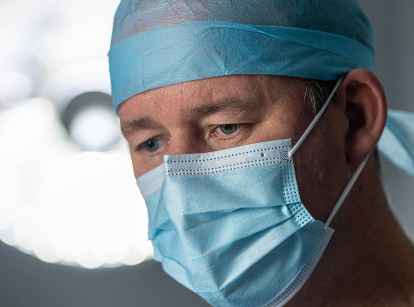Introduction
Robotic surgery is a relatively new modality of surgery, and it is rapidly making its way to the mainstream of all surgical specialties, including Gynaecology. Robotic surgery is a more precise, elegant form of surgery and is excellent for difficult dissections due to adhesions and for reaching difficult areas in the surgical field that may present. The benefits of less post operative pain due to less movement of the port sites in the body, leads to a quicker and easier recovery for the patient also.
Indications
Robotic surgery can be used to perform a hysterectomy (removal of the uterus), salpingo-oophrectomy (removal of the ovaries and Fallopian tubes), removal of endometriosis, and division of adhesions.
Procedure
Robotic surgery is performed under a general anaesthetic in theatre. A total of five ports are used to place the camera and instruments into the body. Four of the ports are 7mm in size and one port is 12mm in size. One of the 7mm ports are placed in the umbilicus (belly button) and the other 3 ports are placed across the abdomen in a line level with the umbilicus. The slightly larger 12mm port is placed on the left side just above the 7mm ports just under the rib cage. This port is to pass sutures into the abdomen to stitch the vagina closed after the uterus is removed through the vagina in a hysterectomy, and also to pass a suction tube to wash out the pelvis at the end of the procedure and suction any bleeding that may occur during the surgery. The robotic instruments are controlled by Dr Friebe from a console next to the patient.
Postoperative Instructions
This is usually quite quick, and as a result a 1-2 night stay in hospital is most common. Some minor pains may be experienced for the first week or so, but they are generally easily managed with oral pain relief which is provided on discharge from hospital.
Risks
Potential risks and complications of robotic surgery are no different from those of an open abdominal, vaginal, or laparoscopic hysterectomy. These risks include:
- A small chance of heavy bleeding during surgery or after surgery has been completed.
- A small chance of infection after the surgery. This can be infection of the small scars on the abdomen, a urinary tract infection from having the catheter in the bladder, or very rarely an infection in the pelvis where the surgery has been performed.
- A very small chance of accidental injury to bladder, the bowel, or ureters. Any injury noted at surgery is repaired at the time.
Usual surgical time for a robotic assisted hysterectomy (assuming all is straightforward) is like any other hysterectomy type – about an hour.
Related Information
Please contact Dr Friebe’s rooms if you are considering robotic surgery and would like a patient brochure from Device Technologies (da Vinci Surgical System).

